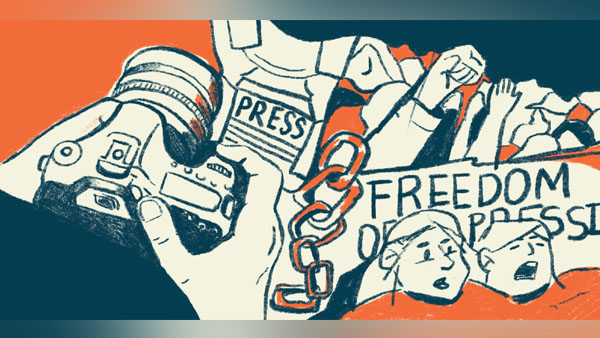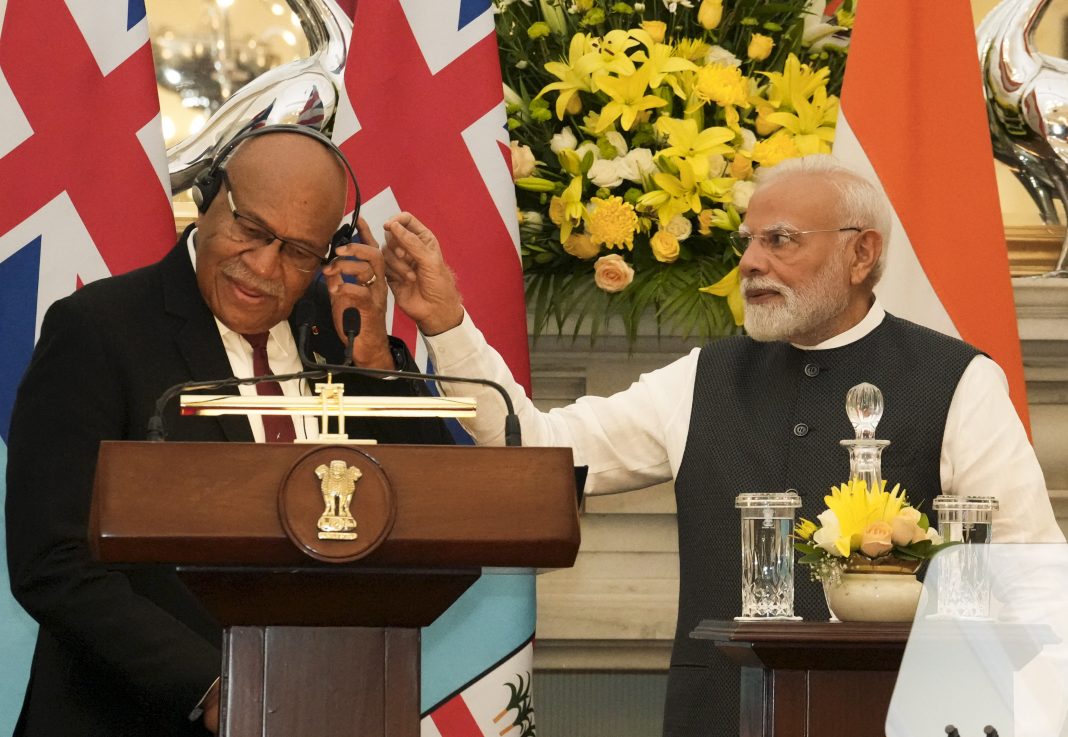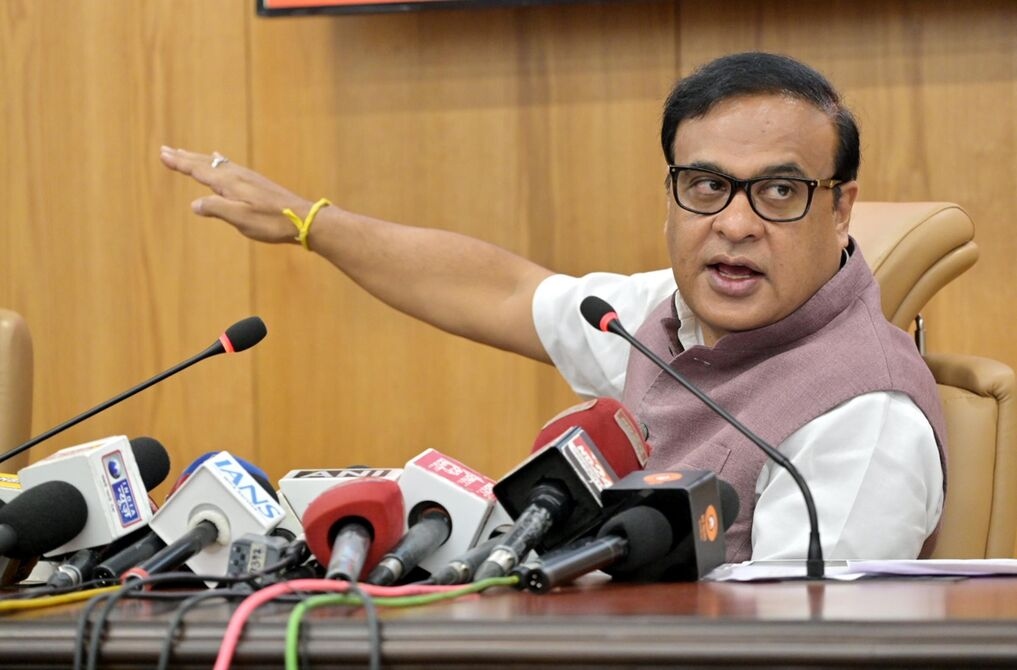By Satyabrat Borah
In the annals of democratic backsliding, few issues strike as profoundly at the heart of a free society as the resurgence of sedition laws. India, often celebrated as the world’s largest democracy, finds itself at a crossroads once again with the reintroduction of a stringent sedition provision under Section 152 of the Bharatiya Nyaya Sanhita (BNS), the new criminal code that replaced the colonial-era Indian Penal Code in July 2024. This “sedition redux” has ignited fierce debates, with critics arguing that it not only revives the ghost of an archaic and draconian law but also poses an even greater threat to freedom of expression and press freedom. The original Section 124A, struck down as unconstitutional by the Supreme Court in May 2022 for its misuse against dissenters, has been reincarnated in a form that many legal experts decry as a wolf in sheep’s clothing. By broadening the scope to include acts that “excite secession, armed rebellion, or subversive activities,” the new law threatens to chill journalistic endeavors, stifle public discourse, and erode the foundational pillars of democracy. As journalists, activists, and citizens grapple with this development, the question looms large: is this a step toward authoritarianism disguised as national security?
The history of sedition in India is a tale of colonial repression morphing into postcolonial overreach. Enacted in 1870 during British rule, Section 124A was wielded as a tool to silence Indian nationalists, from Bal Gangadhar Tilak to Mahatma Gandhi, who famously called it the “prince among the political sections of the Indian Penal Code designed to suppress the liberty of the citizen.” Post-independence, the law persisted, ostensibly to safeguard sovereignty, but its application revealed a pattern of abuse. Over the decades, it was invoked against cartoonists, historians, and protesters, often for mere criticism of the government. The 2022 Supreme Court verdict in the case of S.G. Vombatkere v. Union of India was a beacon of hope, declaring the provision vague and prone to misuse, effectively putting it in abeyance until Parliament could amend it with clearer guidelines. The court emphasized that dissent is not disloyalty and urged a reevaluation to align with Article 19(1)(a) of the Constitution, which guarantees freedom of speech and expression. Yet, just two years later, the government has reintroduced sedition under a new guise, punishable by life imprisonment or up to seven years in jail for offenses that “endanger sovereignty, unity, and integrity of India.” This revival, part of a larger overhaul of criminal laws including the Bharatiya Nagarik Suraksha Sanhita and Bharatiya Sakshya Adhiniyam, was passed amid controversy in Parliament, with opposition voices decrying the lack of consultation and the potential for executive overreach.
At the epicenter of this storm is the press, whose role as the fourth estate is now under siege. Press freedom in India has been on a downward trajectory for years, with the country slipping to 159th out of 180 nations in the 2023 World Press Freedom Index by Reporters Without Borders. Journalists face harassment, arrests, and violence, particularly those covering sensitive topics like corruption, communal tensions, or government policies. The new sedition law exacerbates this vulnerability by providing a legal cudgel for authorities to target media houses and reporters. Consider the case of Siddique Kappan, a journalist arrested in 2020 under sedition charges while heading to report on the Hathras gang-rape incident. Detained for over two years without trial, his ordeal exemplifies how such laws can be used to intimidate the press. Under the BNS, the threshold for invoking sedition appears even lower, as it encompasses “subversive activities” without defining them precisely, leaving room for subjective interpretation. A report by the Editors Guild of India highlights that between 2014 and 2023, over 900 journalists were targeted under various laws, including sedition, often for fact-based reporting that embarrassed those in power. With digital media’s rise, independent outlets and social media influencers are equally at risk, as the law could criminalize online critiques perceived as threats to national unity.
The threat to freedom of expression extends beyond the press to the broader citizenry, transforming everyday discourse into a minefield. In a democracy, the right to criticize is sacrosanct, yet the new law’s expansive language could equate legitimate protest with sedition. For instance, environmental activists opposing large infrastructure projects or farmers rallying against agricultural reforms might find their actions labeled as “exciting secession” if they challenge state narratives. Legal scholars like Gautam Bhatia argue that this provision violates the proportionality test under constitutional law, as it imposes disproportionate penalties for speech that does not directly incite violence. The Supreme Court’s 2022 guidelines, which required prior government sanction for sedition cases, have been ignored in the new framework, potentially allowing police to act unilaterally. This not only tramples on Article 19 but also contravenes international human rights standards, such as those outlined in the International Covenant on Civil and Political Rights, to which India is a signatory. Moreover, in an era of fake news and misinformation, the law could be selectively enforced against opposition voices while shielding ruling party sympathizers, fostering a culture of self-censorship. Universities, once bastions of free thought, have already seen students booked under similar charges for anti-CAA protests in 2019-2020, and the redux could stifle academic freedom further.
Proponents of the law defend it as essential for combating terrorism, separatism, and foreign interference in an increasingly volatile world. They point to incidents like the 2019 Pulwama attack or ongoing insurgencies in regions like Kashmir and the Northeast, arguing that robust measures are needed to protect national security. Home Minister Amit Shah has stated that the new codes modernize the justice system, making it more efficient and citizen-centric, with sedition reframed to focus on tangible threats rather than vague disaffection. Indeed, the BNS introduces timelines for investigations and trials, aiming to reduce case backlogs. However, critics counter that existing laws like the Unlawful Activities (Prevention) Act (UAPA) and the National Security Act (NSA) already provide ample tools against real threats, often with less due process. The sedition provision’s history of misuse suggests it’s more about control than security. In a digital age where information spreads rapidly, empowering authorities without checks risks authoritarian drift, as seen in neighboring countries like Pakistan and Bangladesh, where similar laws have silenced dissent.
The global context underscores the urgency of safeguarding press freedom. Democracies worldwide are witnessing a populist surge that views the media as adversaries. In the United States, attacks on the press by political figures have normalized hostility, while in Hungary and Turkey, governments have consolidated media control through legal and economic pressures. India’s trajectory mirrors this, with tax raids on critical outlets like the BBC in 2023 and the freezing of NewsClick’s assets under UAPA. International bodies like the United Nations have expressed alarm, with Special Rapporteur Irene Khan urging India to repeal sedition laws that undermine journalistic independence. Domestically, civil society organizations such as the People’s Union for Civil Liberties (PUCL) and Amnesty International India (before its operations were curtailed) have mobilized against the BNS, filing petitions in the Supreme Court challenging its constitutionality. Journalists’ unions are calling for strikes and awareness campaigns, emphasizing that a free press is indispensable for holding power accountable, exposing corruption, and informing public opinion.
To mitigate this trampling on freedoms, several reforms are imperative. First, the government must incorporate the Supreme Court’s 2022 safeguards, mandating pre-sanction by a high-level committee and narrowing the definition to speech that directly incites imminent violence, aligning with the “clear and present danger” test from American jurisprudence. Second, strengthening independent regulatory bodies like the Press Council of India with enforceable powers could protect the media from arbitrary actions. Third, investing in digital literacy and fact-checking initiatives would address misinformation without resorting to censorship. Education on constitutional rights in schools and media literacy programs could empower citizens to engage critically without fear. Moreover, international pressure through forums like the G20, where India holds influence, could encourage adherence to global norms. Ultimately, true national security lies in an open society where grievances are voiced freely, preventing them from festering into unrest.
The reintroduction of sedition under the BNS is not merely a legal tweak; it is a redux of repression that endangers the soul of Indian democracy. As the nation approaches its 78th year of independence, the legacy of freedom fighters who fought colonial chains demands vigilance against new shackles. Press freedom is not a luxury but the oxygen of democracy, and trampling it invites darkness. With ongoing legal challenges and public outcry, there is hope for course correction. Yet, without concerted action from the judiciary, legislature, and executive, the new law risks becoming a tool for silencing the very voices that strengthen the republic. In the words of Justice D.Y. Chandrachud, “Democracy survives not just by institutions but by the unfettered expression of ideas.” India must choose: embrace this ethos or descend into the shadows of sedition’s past. The stakes could not be higher, for a muzzled press today foretells a silenced nation tomorrow.




